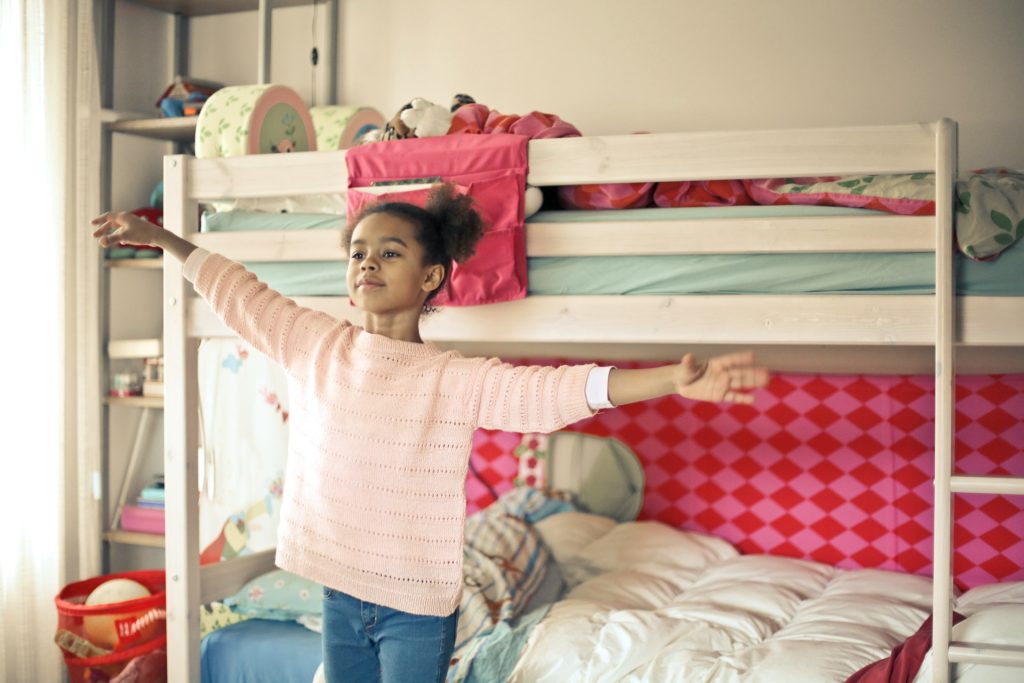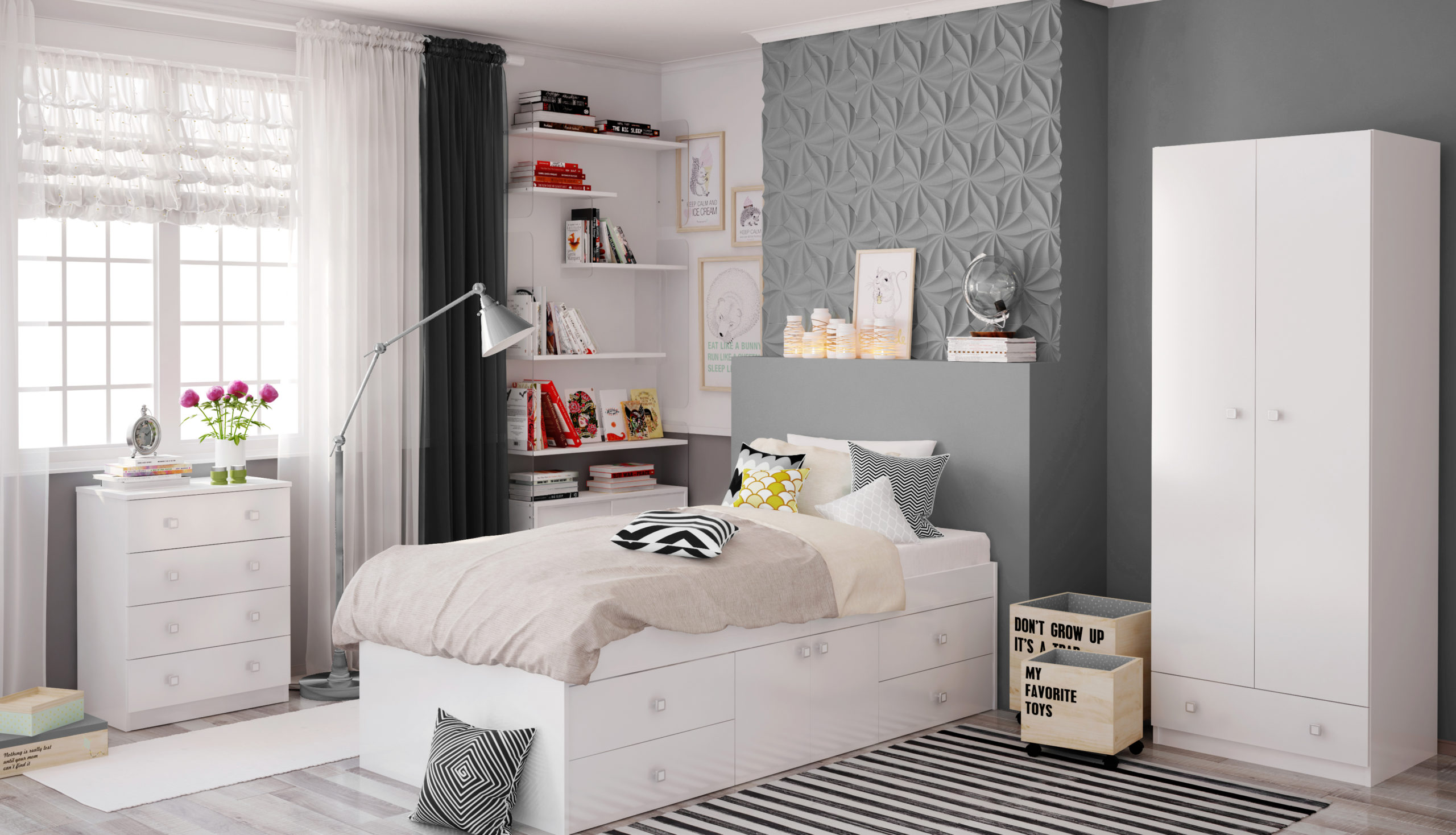Blog
Kids Bed Sizes: Find the Perfect Fit for Your Child’s Room
Deciding on the perfect bed size for your child’s room shouldn’t be a puzzle. As kids grow, their bed needs change—from the compact cots of infancy to the spacious frames that teens crave. In this guide, you’ll discover the array of kids’ bed sizes tailored to each stage of childhood, ensuring your choice maximises comfort without cramping space for play and growth.
Key Takeaways
- Beds for kids range from cots to queen-sized and should be chosen based on child’s age and room size to ensure comfort, safety, and room for growth.
- Space-saving bed options like bunk beds, loft beds, and trundle beds are great for making the most of limited space and can adapt to different needs over time.
- The right mattress is crucial for a child’s sleep health and should fit the bed frame perfectly while providing support and allergen resistance.
A Quick Bed Size Comparison
| Bed | W x L (cm) | W x L (feet + inches) | Mattress Size (cm) | Age (years) |
|---|---|---|---|---|
| Cot | 65cm x 125cm | 2'1.5" x 4'1" | 60cm x 120cm | 0-2 |
| Cotbed | 75cm x 145cm | 2'5" x 4'9" | 70cm x 140cm | 2-5 |
| Toddler Bed | 70cm x 140cm | 2'3" x 4'6" | 70cm x 140cm | 1-5 |
| Shorty Bed | 75cm x 175cm | 2'5" x 5'9" | 75cm x 175cm | 2-5 |
| Small Single Bed | 75cm x 190cm | 2'5" x 6'3" | 75cm x 190cm | 5+ |
| Single Bed | 90cm x 190cm | 3'0" x 6'3" | 90cm x 190cm | 5+ |
| Euro Single Bed | 90cm x 200cm | 3'0" x 6'6" | 90cm x 200cm | 5+ |
| Small Double Bed | 120cm x 190cm | 3'11" x 6'3" | 120cm x 190cm | 6-10+ |
| Double Bed | 135cm x 190cm | 4'5" x 6'3" | 135cm x 190cm | 6-10+ |
| All sizes are approximate and actual dimensions may vary based on the brand and manufacturer. | ||||
Understanding Kids Bed Sizes: From Toddlers to Teens
Embarking on the journey to find the right bed for your child is akin to tailoring —it needs to fit just right, with a little space for comfort. From the snug confines of toddler beds meant for the littlest dreamers to beds that cater to the sprawl of teens, knowing the bed landscape is crucial. You’ll see how bed size evolves with your child, ensuring each transition is as smooth as the leap from a fairytale to the cosmos.
With options including cot beds, small singles, and single mattresses, let’s explore in detail what size bed is right for each stage of childhood.
Cot and Cot Bed Dimensions
Cots are the first beds where your baby will dream, and at dimensions of 125cm x 65cm, they’re snug and secure for ages 0-2 years. But as your tot grows, the cot bed steps in at a roomier 145cm x 75cm, serving well into the nursery years. These beds are both cosy and efficient for parents working with smaller spaces.
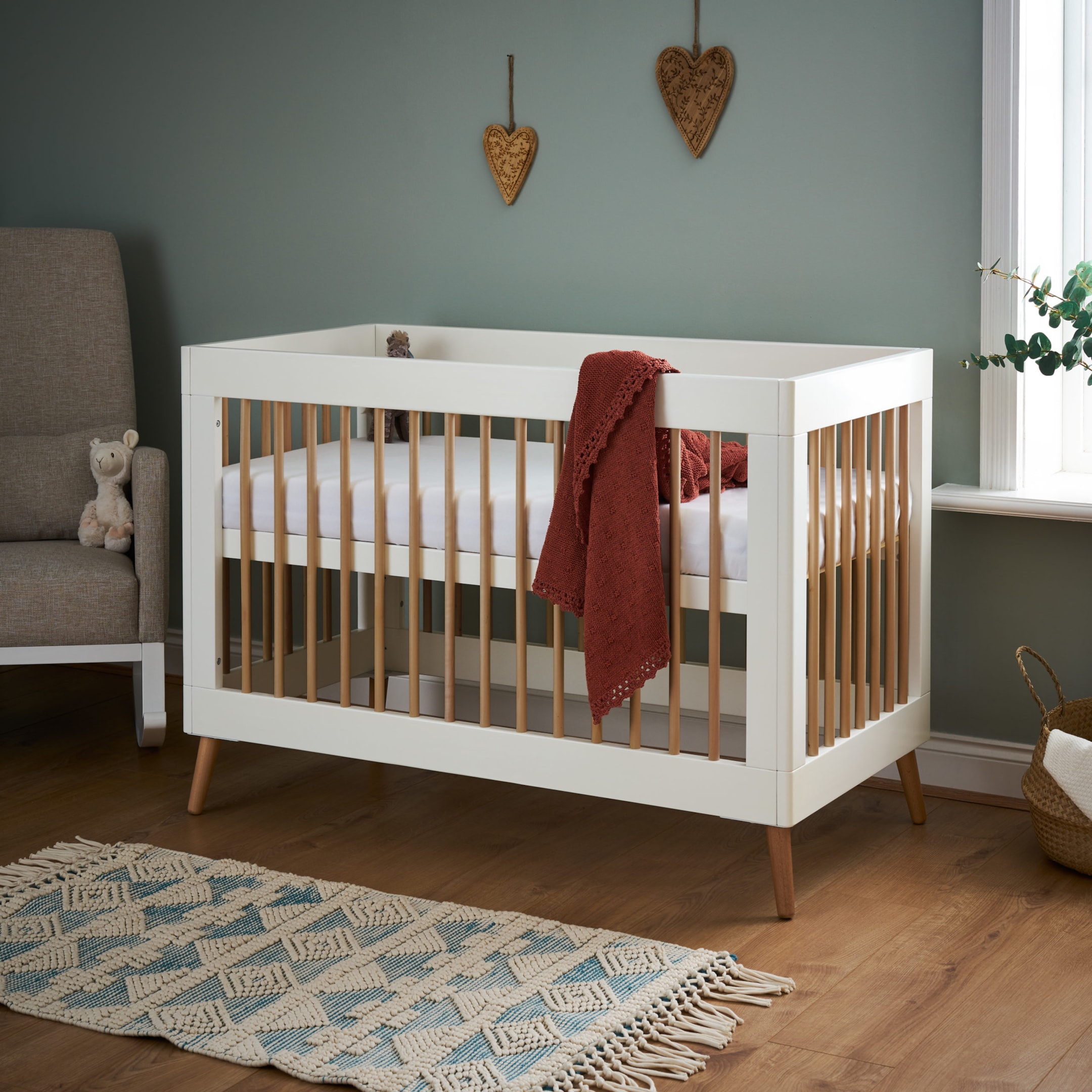
Pictured: The Maya Mini Cot Bed. Ideal for ages 0-2. Shop our full cot bed range.
And when it’s time to transition, you’ll find the same mattress size fits both cotbeds and toddler beds, simplifying the change and saving you a little money.
Moving to a Toddler Bed
Toddler beds are an excellent transitional option for children moving out of their cots. Typically designed for children aged 1 to 5 years, these beds are lower to the ground, making it easier and safer for little ones to climb in and out on their own. The inclusion of side rails on many toddler beds provides an added layer of security, preventing nighttime tumbles.
Choosing a toddler bed over a shorty bed or small single bed can be beneficial for several reasons. The smaller dimensions of a toddler bed make it a perfect fit for nurseries or smaller bedrooms, freeing up more space for play and other activities. What’s more, toddler beds often use the same mattress size as cots, which means you can reuse the cot mattress, saving money and making the transition smoother for your child.
The Transition to Small Single Beds
As your child sprouts up, the small single bed becomes their new comfort zone. Measuring 190cm x 75cm, these beds are designed for children aged 4 and up, providing that extra length for growing limbs. It’s the ideal stepping stone between toddler beds and bigger kids’ beds, offering ample room without overwhelming small bedrooms.

Pictured: The Kidsaw Low Cabin Bed. Ideal for transitioning your child into a single bed. Shop our full cabin bed range.
When to Opt for a Single Bed
The single mattress, typically 90cm x 190cm, is ideal for kids aged 6 and above. It’s the popular choice, striking a balance between cosiness and the need for more wiggle room. This size bed is right for a variety of bedroom spaces and is practical when limited space prevents the inclusion of a small double bed.
Making Smart Bed Choices
In the quest for bedroom space, smart bed choices are the knights in shining armour. Whether you’re dealing with a petite playroom or a shared sibling space, beds like bunk beds, loft beds, and trundle beds are the space-saving bed champions. Let’s discover how these beds can upgrade your child’s bedroom, making room for every toy, book, and dream.
Bunk Beds: A Space-Saving Solution
Bunk beds are like vertical playgrounds, stacking sleep spaces and freeing up the floor for creativity and fun. They’re perfect for siblings, offering personal realms in a shared kingdom. Triple sleeper variations bring even more versatility, with a single bed aloft and a spacious double bed below—ideal for sleepovers or when family visits.
With safety at the helm, equipped with guard rails and adhering to standards, bunk beds offer peace of mind while nurturing bonds between bunkmates.
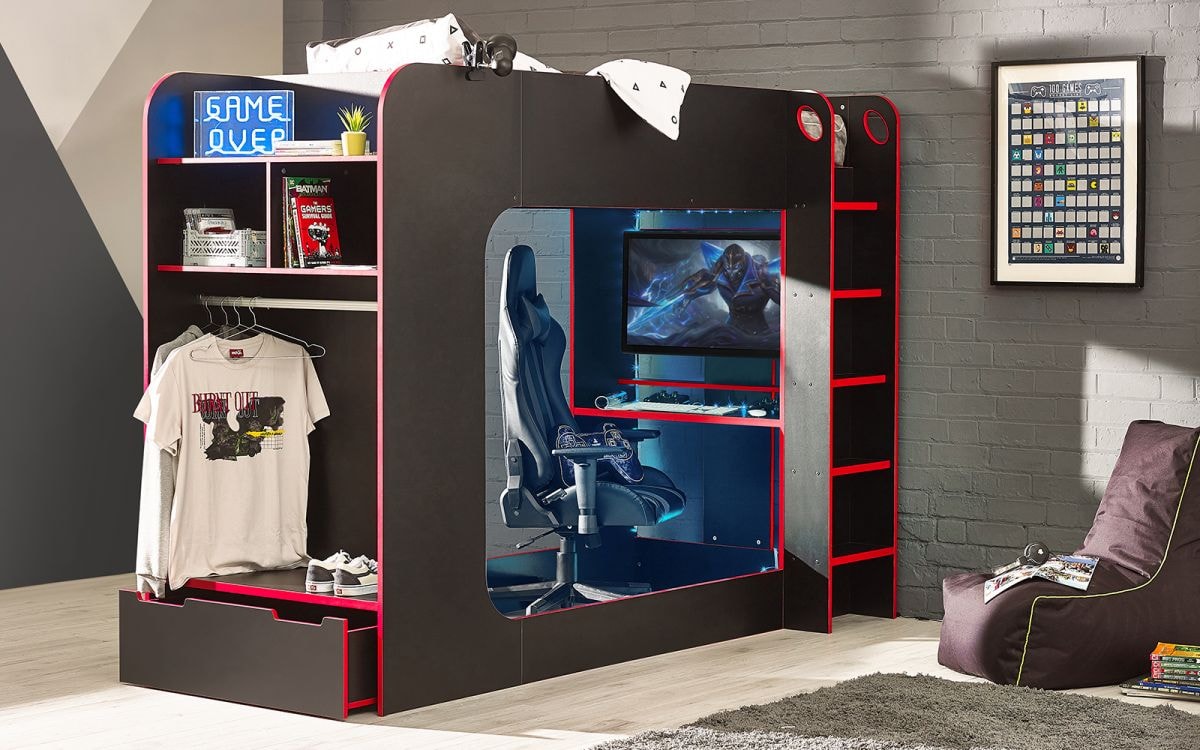
Pictured: The Impact Gaming Bunk Bed. Perfect for budding gamers and offering ample storage. Shop our full gaming bed range.
Loft Beds: Elevated Sleeping with Extra Storage
Loft beds (aka highsleeper beds) take the concept of the bunk bed and elevate it—literally. By raising the bed high, the space beneath becomes a blank canvas for a study nook, a secret clubhouse, or even a cosy reading corner. This space-saving bed is a revelation for small bedrooms, providing extra storage and an imaginative sleeping area rolled into one.
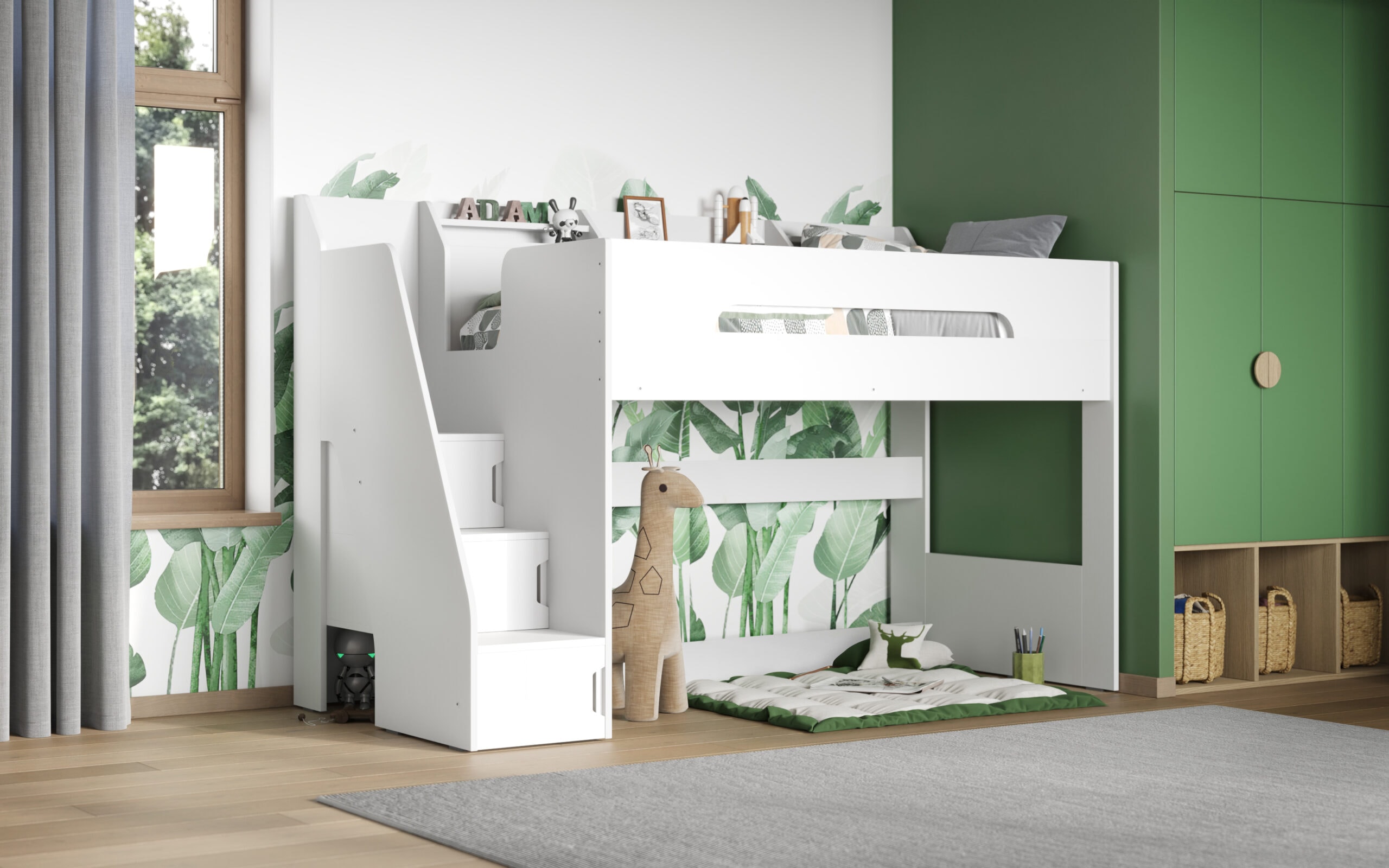
Pictured: The Stepaside Staircase High Sleeper Bed. Offering ample space below for storage, a desk, or activities. Shop our full highsleeper bed range.
Trundle Beds: Versatile Guest Solutions
Trundle beds are the secret agents of kids’ furniture, concealing an extra mattress that slides out for impromptu guest accommodations. They’re the epitome of space-saving beds, ensuring that there’s always room for a friend without sacrificing valuable play space.
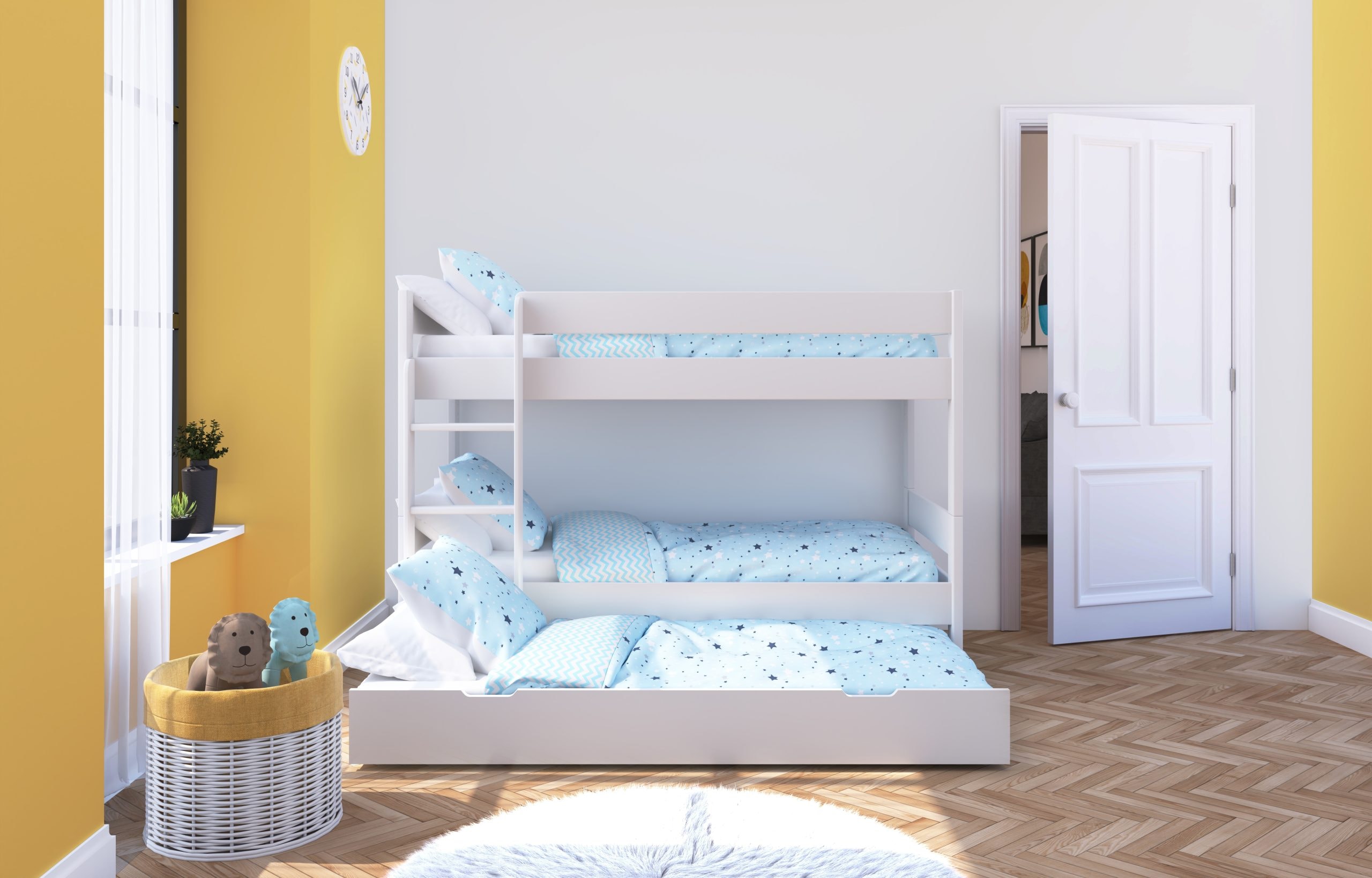
Pictured: The Stompa Compact Detachable Trundle Bed. Offering extra space and customisation options.
Choosing an Age-Appropriate Bed
Finding a bed that grows with your child will save you time and effort down the line. It’s about balancing their need for a comfortable bed with the inevitable growth spurts that come with each birthday candle. From the safety features essential for toddlers to the spacious indulgence that teens crave, the right bed for each age group is a cornerstone of their sanctuary.
Let’s guide you through the best beds for young children, the ideal choices for middle schoolers, and how to select a spacious bed for teenagers.
Best Beds for Young Children
For the little ones taking their first steps into independence, toddler beds are the perfect transition from the safety of a cot to the excitement of a ‘big kid’ bed. Low to the ground and snug, a toddler bed caters to children aged between 1 and about 5 years.
With features like side rails and protective padding, these beds are designed to keep your child secure and offer the peace of mind we all need as parents.
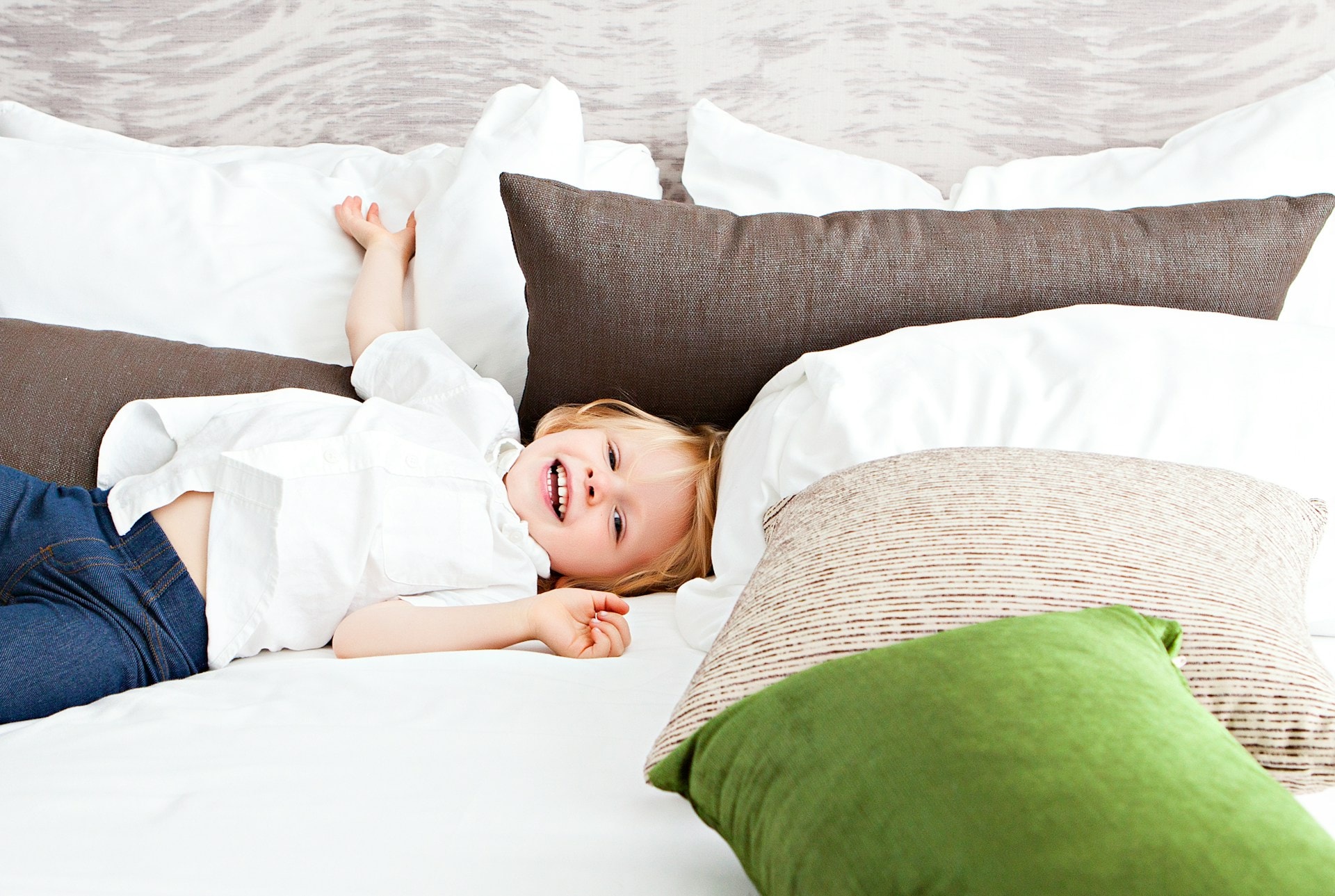
Ideal Beds for Middle Schoolers
When your child hits the middle school years, their world—and their need for space—expands. A small double bed steps up to the challenge, offering a generous 190cm x 120cm surface that supports their growth and provides room for sprawling homework sessions. It’s a bed that acknowledges their transition while promising longevity, seeing them through to their teen years with ease.
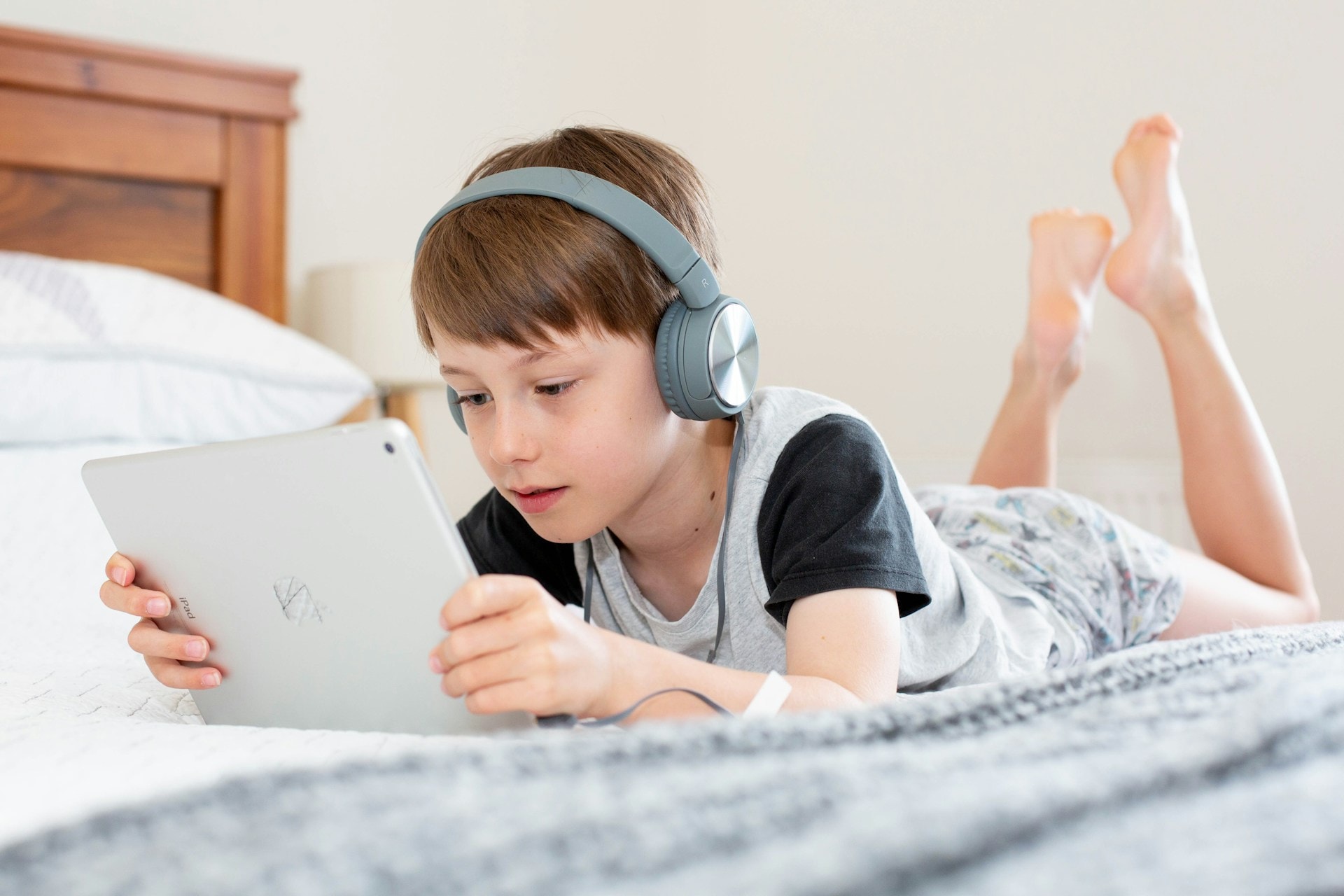
Selecting a Spacious Bed for Teenagers
For teenagers, a spacious bed is often more than just a place to sleep—it’s a retreat from the world, a space for daydreams and late-night chats. Full XL or queen-sized mattresses give them all the room they need to stretch out and grow, accommodating their needs well into young adulthood.
Innovative Bed Designs for Every Child’s Bedroom
The world of kids’ beds is brimming with innovation, turning every bedtime into an adventure. Imagine convertible bunk beds that separate into two beds as your children grow, or themed beds that bring their favorite stories to life. These beds are not just sleeping spaces; they’re launchpads for imagination.
Let’s delve into the realm of cabin beds and triple bunk beds, where fun meets functionality and space is never an issue.
Cabin Beds: Fun Meets Functionality
Cabin beds are the Swiss army knives of children’s beds, combining sleep, play, and storage in one ingenious design. With themes ranging from treehouses to castles, they’re a child’s dream come true, offering a playful retreat that’s as practical as it is enchanting.
Built-in desks and storage make these beds a smart choice for keeping clutter at bay while providing a space that’s all their own.
Pictured: Kidsaw Captain’s Cabin Bed in White. Offering ample storage and a comfortable place to sleep.
Triple Bunk Beds: Accommodating Multiple Kids
Triple bunk beds are the ultimate space savers for families with multiple children sharing a room. These beds offer the following benefits:
- They stack three beds vertically, maximising floor space
- They ensure everyone has a place to call their own
- They are made with high-quality materials and adhere to strict safety standards
- They are durable, making them a practical choice for family life
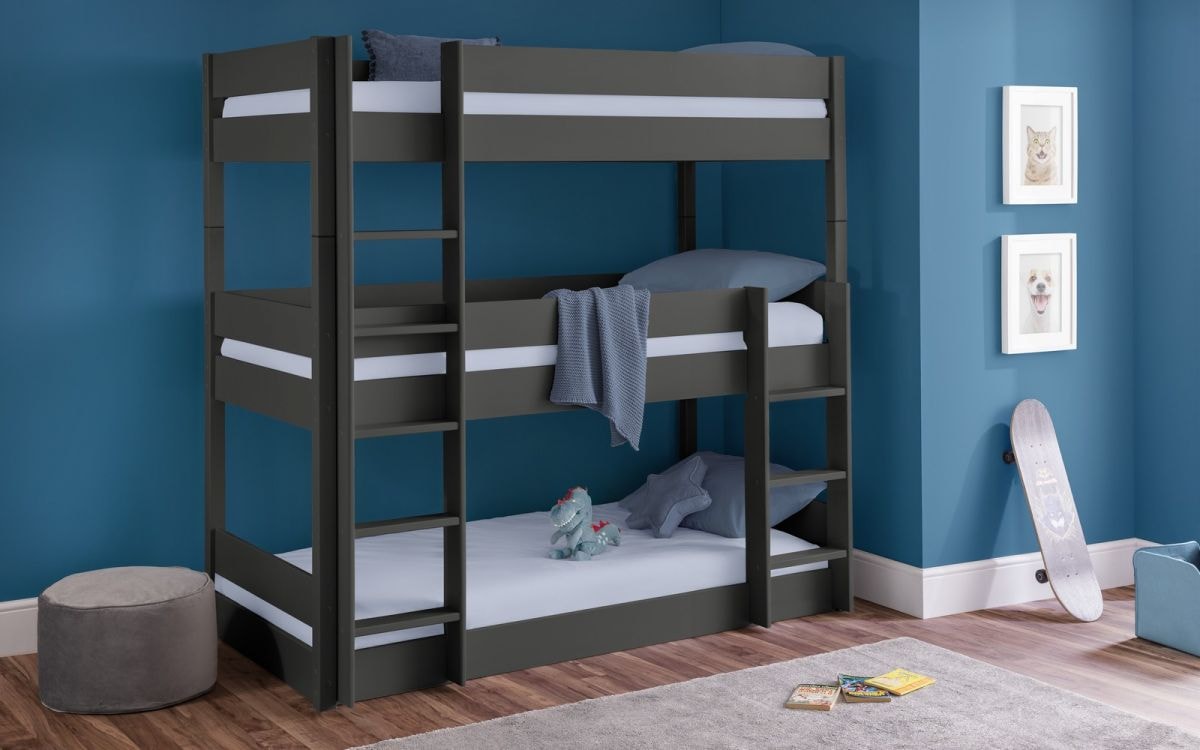
Pictured: The Trio Bunk in Anthracite by Julian Bowen. Shop our full range of triple bunk beds here.
We recommend that you wait until your children are older (typically 6+) before you allow them to sleep on the middle or top bunks. Younger children can sleep on the bottom bunk from a younger age.
What to Consider
When it’s time to buy a new bed for your child, the decision goes beyond just picking a style. You’re looking for a bed that fits perfectly in your child’s room, one that will support them through every growth spurt and pillow fight. From assessing room size to balancing comfort with growth, the right bed can be a game-changer in your child’s well-being and development.
Let’s consider the essential factors.
Room Size and Bed Positioning
Before you fall in love with a bed, measure twice. Assessing the room size and where the bed will sit within it is crucial to ensuring a good fit. You want to choose a bed that leaves enough room for play, study, and those impromptu dance routines.
By taking accurate measurements of the room, you can select a bed that harmonises with the space and other furniture, creating a balanced and functional environment for your child.
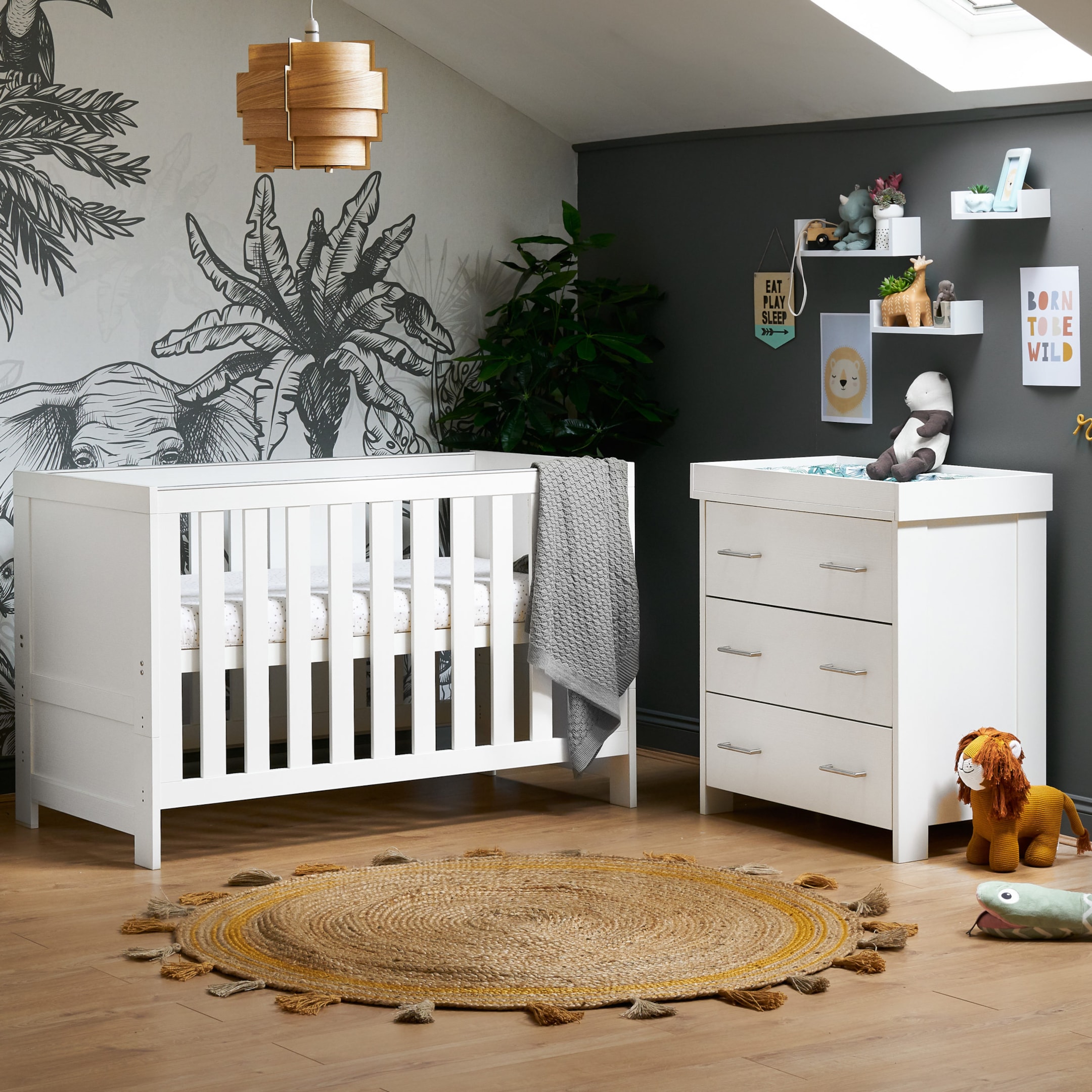
Pictured: The Obaby Nika 2 Piece Room Set. Shop our full range of roomsets here.
Comfort and Growth Needs
Comfort is king when it comes to children’s beds, but so is choosing a size that won’t be outgrown too quickly. It’s about finding that sweet spot where your child can snuggle in comfortably today and still have room to grow into tomorrow. A bed that’s too small can hinder a good night’s rest, while one that’s too large may overwhelm their space. Strike the right balance and you’ll have a bed that’s just right for your growing child.
Choosing the Right Mattress
A bed frame is just the skeleton; it’s the mattress that brings comfort to life. From hypoallergenic options that keep allergies at bay to advanced constructions that support their growing bodies, the right mattress is a pillar of your child’s sleep health.
Let’s navigate the factors that make a mattress the right fit for your child, ensuring they get the rest they need to conquer the world each day.
Mattress Size and Fit
The perfect fit of a mattress within a bed frame is like a tailored suit—it should match precisely to ensure comfort and safety. With standard sizes like Shorty and Single, it’s essential to select a mattress that snugly fits the frame and supports your child’s sleep without any gaps or overhang.
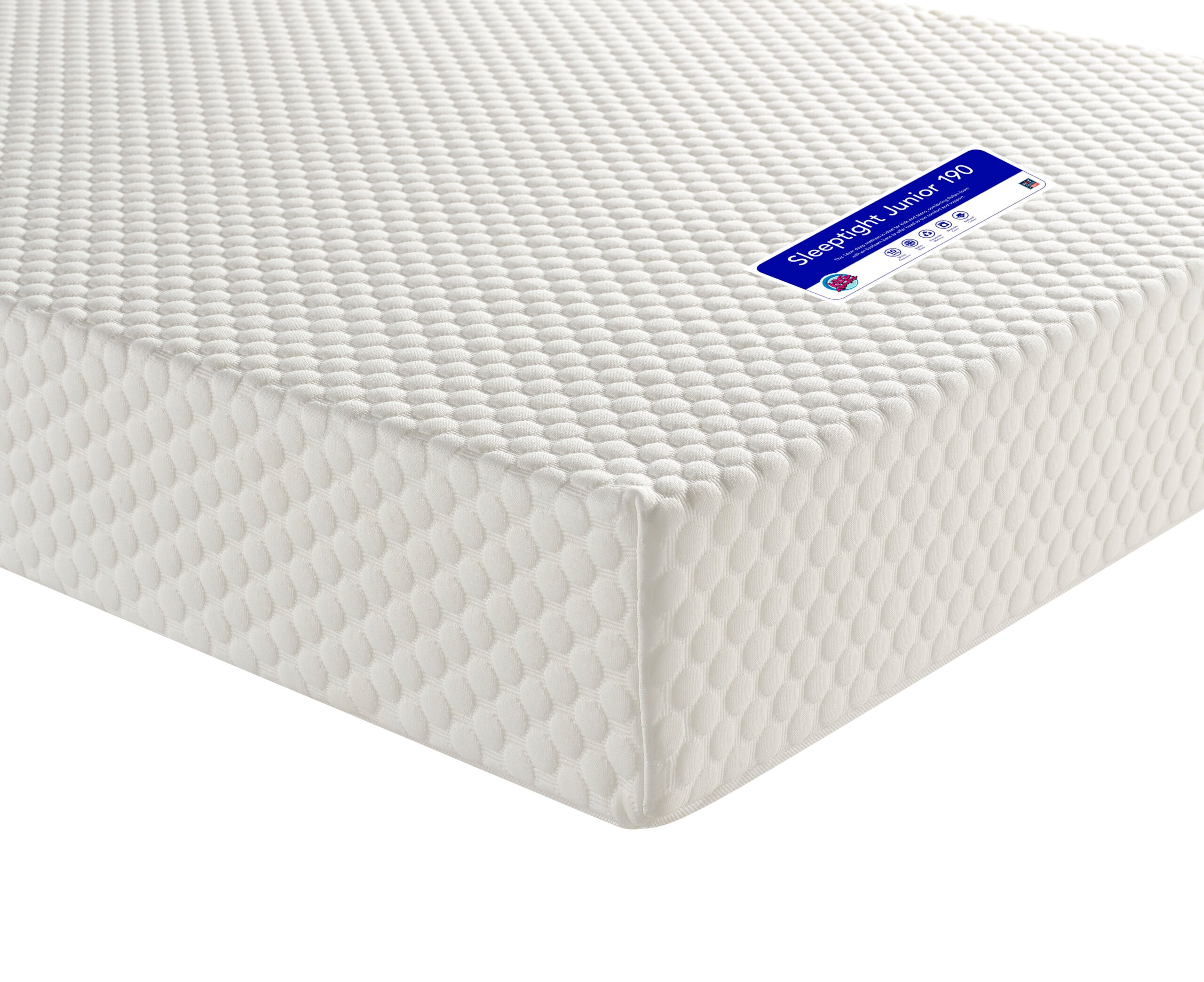
Pictured: The Sleeptight Junior UK Mattress. Ideal for single beds, bunk beds and highsleepers, offering premium comfort for your child.
Especially for bunk beds, the mattress should be light and of an appropriate depth to prevent any risks, allowing your child to climb into their cosy nook safely.
Features of a Quality Kids’ Mattress
When you’re shopping for a mattress for your child, consider the following features to ensure maximum comfort for your little one:
- Orthopaedic Support: Provides proper alignment for growing bodies.
- Hypoallergenic Properties: Helps to prevent allergies and asthma.
- Waterproof Surface: Protects against spills and accidents.
- Individually Pocketed Springs: Offers better support and reduces motion transfer.
- Breathable Materials: Enhances airflow to keep the mattress cool and comfortable.
- Durable Construction: Ensures the mattress will last through years of use.
- Certifications: Look for safety certifications such as CertiPUR-US or OEKO-TEX.
- Removable and Washable Cover: Makes cleaning easy and maintains hygiene.
A high-quality mattress can last 8-10 years, so making the right choice before you buy is crucial.
Creative Ways to Save Floor Space in Your Child’s Bedroom
When it comes to decorating a child’s bedroom, every inch of floor space is precious. It’s the stage for epic toy battles, the canvas for art projects, and the dance floor for their first steps. Creative solutions like beds with built-in storage and multi-functional furniture can turn even the tiniest of rooms into a versatile paradise.
Let’s dive into the world of space-saving beds and furniture that make room for all of your child’s activities.
Utilising Beds With Underneath Storage
Beds with underneath storage are like hidden treasure chests, providing a home for toys, clothes, and secret stashes. These space-saving wonders utilise the often-overlooked area beneath the bed, offering a neat solution to keep your child’s room organised and spacious.
Whether it’s cabin beds with integrated drawers or beds with clever compartments, these designs make the most of your child’s bedroom space.
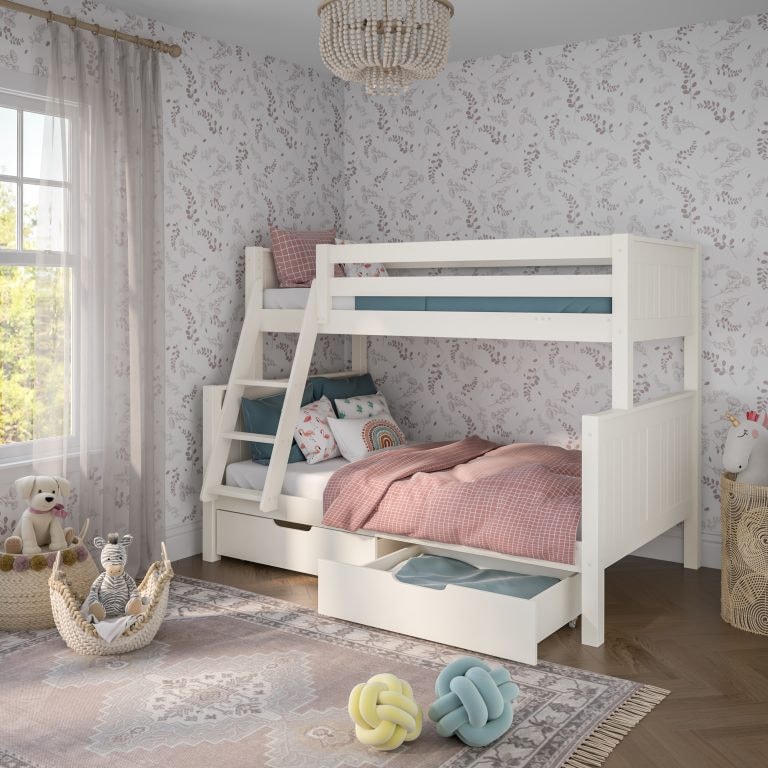
Pictured: The Stompa Classic Originals Trio Bunk Bed With Drawers.
Incorporating Multi-functional Furniture
Multi-functional furniture can work magic in a kids’ room, transforming a single piece into a bed, a desk, or a play area as needed. A daybed with a trundle, for example, doubles as a cosy sofa during the day and a comfortable bed at night, all while offering an additional sleeping space for guests.
By choosing furniture that serves multiple purposes, you maximise the functionality of your child’s bedroom without compromising on style or space.
Summary
From the first cot to the full-size bed fit for a teen, the journey of finding the perfect bed for your child’s room is filled with dreams and decisions. By understanding the right sizes, maximising bedroom space with smart designs, and choosing quality mattresses, you can create a sleep sanctuary that grows with your child. With the right bed as their foundation, your child is set for restful nights and joyous days, ready to explore, learn, and imagine without bounds.
Frequently Asked Questions
At what age should I transition my child from a cot to a toddler bed?
It’s time to transition your child to a toddler bed when they start becoming mobile and can climb out of their cot, usually around the age of 2 to 3 years. Toddler beds have safety features like side rails that make them safe and accessible for young children. Read more about toddler bed sizes in our ultimate guide.
Are bunk beds safe for my children?
Yes, as long as you follow safety guidelines like using guard rails and not allowing children under 6 to sleep on the top bunk, bunk beds can be safe for children. You know your child better than anyone else, and you must use your judgement as to whether your child will understand how to stay safe when using a bunk bed.
Can a single bed last my child through their teenage years?
Yes, a single bed can last your child into their teenage years, providing ample space for them as they grow. However, as your child gets into their mid to late teens they may feel like they’ve outgrown a single bed, in which case a small double bed or standard double bed might be the next step up.
What should I look for in a quality kids’ mattress?
Look for a kids’ mattress that offers orthopaedic support, hypoallergenic properties, a waterproof surface, individually pocketed springs, and breathable materials to ensure your child’s comfort and health. Happy mattress shopping!
How can I maximise the space in my child’s small bedroom?
To maximise space in your child’s small bedroom, consider using beds with built-in storage and under-bed containers with wheels to save valuable floor space and create extra room for desks or play areas. Multi-functional furniture like a daybed with a trundle can also help maximise every inch of the available space.

